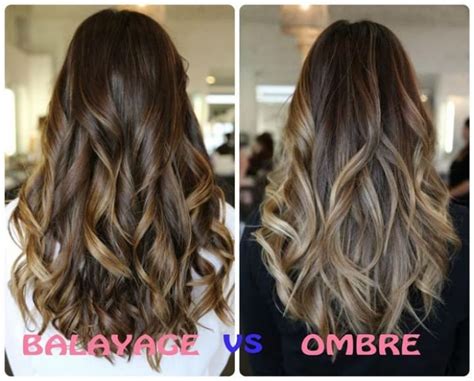Introduction
In the realm of hair coloring, balayage and ombre have emerged as two of the most sought-after techniques, offering a captivating blend of colors to transform your tresses. While both techniques involve a gradual transition from one shade to another, subtle differences set them apart.

What is Balayage?
Balayage, a French term meaning “to sweep,” involves strategically painting hair sections to create a natural-looking, sun-kissed effect. The hair’s natural tones are blended seamlessly, resulting in soft, dimensional highlights.
Pros:
- Natural and Gradual: Balayage mimics the natural highlights created by the sun, providing a subtle yet striking transformation.
- Low Maintenance: The blended effect reduces the need for frequent touch-ups, making it a low-maintenance option.
- Versatile: Balayage can be customized to suit any hair length, texture, and color, offering endless possibilities.
Cons:
- Time-Consuming: The application process can be lengthy, taking several hours to achieve the desired result.
- Skill Required: Balayage requires a skilled stylist to ensure a seamless blend and flattering outcome.
- Costly: The technique’s labor-intensive nature often comes with a higher price tag.
What is Ombre?
Ombre, derived from the French word for “shadow,” creates a bold and dramatic effect by gradually transitioning from a darker root shade to a lighter shade at the ends. The transition can be sharp or blended, depending on the desired look.
Pros:
- Statement-Making: Ombre makes a bold statement, turning heads with its striking contrast.
- Dimensional: The transition from dark to light adds depth and dimension to hair, creating a multi-tonal effect.
- Low Maintenance: The regrowth of the darker roots does not significantly affect the overall look, making ombre a relatively low-maintenance technique.
Cons:
- High Maintenance: The stark contrast may require more frequent touch-ups to maintain the desired effect.
- Potential Damage: The bleaching required for the lighter ends can lead to hair damage if not done carefully.
- Not Suitable for All: Ombre may not be suitable for everyone, particularly those with short hair or fine hair.
Balayage vs Ombre: Key Differences
| Feature | Balayage | Ombre |
|---|---|---|
| Gradual Transition | Soft and subtle | Bold and dramatic |
| Application Technique | Strands of hair are painted | Large sections of hair are bleached |
| Maintenance | Lower maintenance | Higher maintenance |
| Root Coverage | Blends naturally with regrowth | Darker roots are more noticeable |
| Versatility | Can be customized to any hair type | Less versatile, may not suit certain hair types |
Which One Is Right for You?
Ultimately, the choice between balayage and ombre depends on your personal preferences, hair type, and desired effect.
Balayage:
- Ideal for those who want a natural and subtle transformation that requires less maintenance.
- Suitable for all hair types and lengths.
- Creates a sun-kissed, dimensional effect.
Ombre:
- Ideal for those who crave a bold and dramatic statement.
- Adds depth and dimension to hair.
- Can be high maintenance, requiring frequent touch-ups.
Tips for Choosing the Right Hair Colorist
- Experience: Look for a stylist who has extensive experience with balayage or ombre.
- Portfolio: Review their portfolio to see examples of their work.
- Consultation: Schedule a consultation to discuss your desired look and determine if it matches the stylist’s expertise.
- Reviews: Read online reviews from previous clients to get a sense of their satisfaction.
Frequently Asked Questions
- Which technique lasts longer? Balayage has a longer lasting effect due to its subtle transition and reduced need for touch-ups.
- Which technique causes less damage? Balayage involves less bleaching and more gradual application, minimizing potential hair damage compared to ombre.
- Which technique is more expensive? Ombre tends to be more expensive due to the increased amount of bleaching required.
- Can I do balayage or ombre at home? While DIY hair coloring is not recommended, it is best to entrust these techniques to a professional hair colorist to ensure a successful outcome.
Conclusion
Whether you prefer the natural allure of balayage or the bold statement of ombre, both hair coloring techniques offer unique benefits to transform your look. Understanding their key differences and consulting with a skilled hair colorist will help you determine which technique is the perfect match for your individual style and hair goals.
